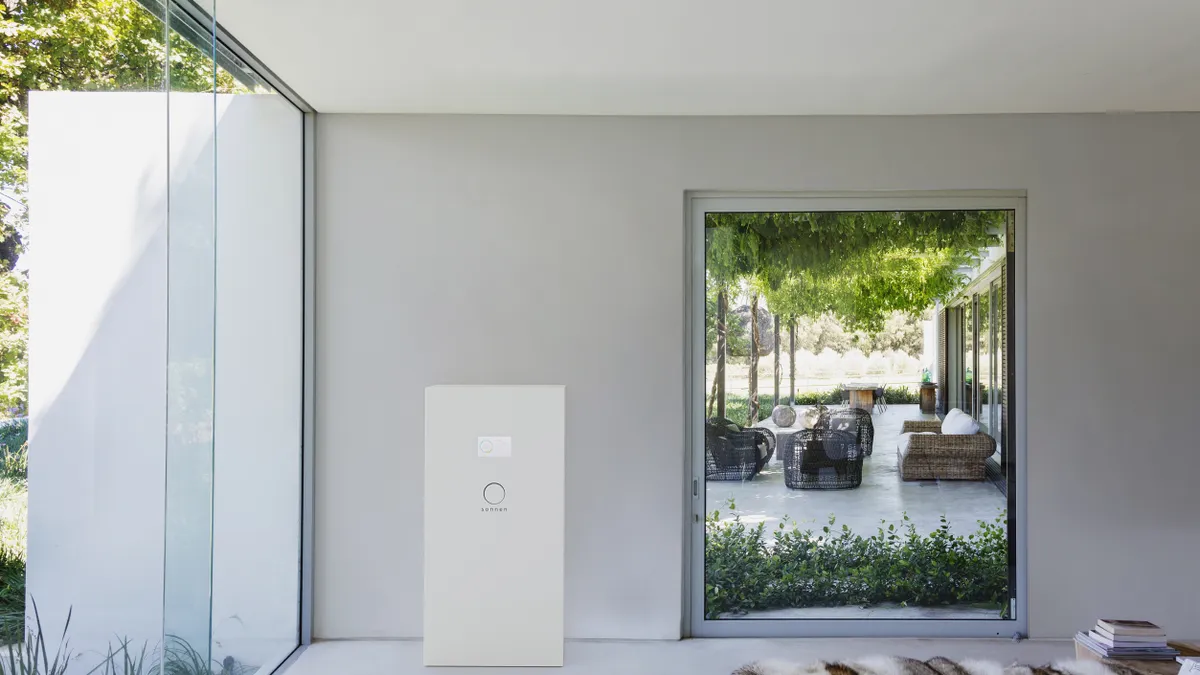Dive Brief:
- Utilities in the United States connected almost 217 MW / 524 MWh of energy storage capacity to the grid in 2017, and while those numbers were driven by utility-supply projects, the Smart Electric Power Alliance (SEPA) says the strongest growth is seen on the residential side.
-
From 2016 to 2017, residential capacity additions grew by 202% in terms of MW, while non-residential additions grew by a modest 9% and utilities even saw the rate decline slightly, according to SEPA's 2018 Utility Energy Storage Market Snapshot, released last month. In terms of MWh, residential projects tallied an even more impressive growth rate: 317%, compared with 105% in the non-residential sector and 89% growth in utility storage.
-
SEPA reported a more than 20% decline in battery prices over the past three years, making price a major factor in the growth of storage, along with the development of new use cases and market mechanisms.
Dive Insight:
While there are areas where energy storage is already flourishing (see in figure below: California, Hawaii and Texas) SEPA says the market as a whole remains in the early stages of development. But for a variety of reasons, not least among them the declining price of lithium-ion batteries, the group says growth is poised to accelerate — everywhere.
Lithium-ion batteries are "a grid asset like none that has ever existed," SEPA Senior Research Associate Nick Esch, lead author of the report, said in a statement.
Utility supply projects accounted for the bulk of storage capacity interconnected last year, according to SEPA's report, making up 144 MW of the 217 MW brought online. Residential storage made up 13 MW and non-residential added 59 MW. Almost three-quarters of solar shoppers surveyed last year said they were also considering a home battery system, a report by EnergySage found.
Many utilities are dipping a toe, said Esch, testing aggregated residential battery storage, fully dispatchable solar plus storage, and microgrids.
"Nationally, the storage market is quite nascent," Esch said. "However, state policy action and regulatory action are creating opportunities in local energy storage markets." Along with leaders like California and Hawaii, he said Maryland, Massachusetts, New Jersey, New York and Nevada are also working quickly to develop more capacity.
SEPA's report revealed very strong interest in growing residential resources.
"Behind-the-meter battery storage customer offerings are of key interest to utilities with 64 percent interested, planning or actively implementing an offering," SEPA said, pointing to Green Mountain Power which has two pilots: one with Tesla using its Powerwall, and another bring your own device offering which can accomodate batteries from four different manufacturers.
The report tallied cumulative deployed energy storage of 922.8 MW / 1,293.6 MWh across 5,167 systems nationwide. It is just the report's second year but it considers responses from 137 utilities representing almost 60% U.S. customer accounts.















